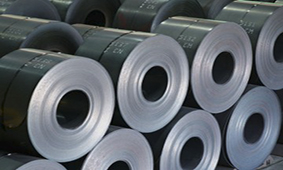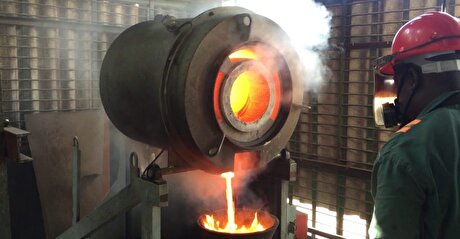
Viewpoint: European HRC pricing mechanism failing

This approach made sense when raw materials were priced annually, and at a fraction of their current cost. But since iron ore and coking coal have moved away from annual benchmark talks to shorter-term contracts — monthly and spot, in the case of iron ore — there is much less sense in using a monthly steel index. Raw materials volatility reverberates throughout the supply chain, and a steel index that publishes just once a month will often lag the real market, whether it is rising or falling.
To put this in context, the February month-to-date average of the daily Argus northwest Europe hot-rolled coil index is €476.25/t, with three days left. The most referenced monthly physical index was €465/t for February. As of today then, mills selling on the basis of that index are losing €11.25 on every tonne.
It is a similar situation in Italy, where indexation is more prevalent. The month-to-date average of the daily Argus domestic Italian index is €443.25/t, while the most used monthly physical index was €435/t for February. As such, mills selling on that basis are losing €8.25 on every tonne they sell. Mills are literally throwing money away.
Of course, this is good for the buy-side, but they will end up paying more than the real market in a downtrend.
Ironically, it is mills that have helped enshrine the dominance of the current pricing mechanism in previous years, and many buyers are reluctant to move away from it as they understandably want to buy on the same basis as their competitors.
Buying or selling against an index that publishes just once a month also makes it difficult to forecast revenue going forward and to mark a stock position against the market.
A daily index provides more clarity over the likely monthly average a few weeks in, and it is easier to track its performance relative to the marketplace. Sales and purchases against the monthly average of a daily index are also much easier to hedge, as most risk management tools typically settle against daily, if not weekly, indices.
The Chicago Mercantile Exchange recently announced it will launch a north European hot-rolled coil futures contract next month, with the London Metal Exchange also likely to launch one later this year.
By Colin Richardson


Zimbabwe labs overwhelmed as gold rally spurs exploration, miner says

Samarco gets court approval to exit bankruptcy proceedings

Cochilco maintains copper price forecast for 2025 and 2026

Gold price stays flat following July inflation data

Mosaic to sell Brazil potash mine in $27M deal amid tariff and demand pressures

HSBC sees silver benefiting from gold strength, lifts forecast

Glencore seeks $13 billion in incentives for Argentina copper projects

Hindustan Zinc to invest $438 million to build reprocessing plant

Samarco gets court approval to exit bankruptcy proceedings

Abcourt readies Sleeping Giant mill to pour first gold since 2014

Roshel, Swebor partner to produce ballistic-grade steel in Canada

EverMetal launches US-based critical metals recycling platform

Iron ore price dips on China blast furnace cuts, US trade restrictions

Afghanistan says China seeks its participation in Belt and Road Initiative

Gold price edges up as market awaits Fed minutes, Powell speech

Flash Metals USA advances critical minerals recovery plant in Texas

Glencore trader who led ill-fated battery recycling push to exit

US hikes steel, aluminum tariffs on imported wind turbines, cranes, railcars

US appeals court temporarily blocks land transfer for Resolution Copper

Abcourt readies Sleeping Giant mill to pour first gold since 2014

EverMetal launches US-based critical metals recycling platform

Iron ore price dips on China blast furnace cuts, US trade restrictions

Afghanistan says China seeks its participation in Belt and Road Initiative

Gold price edges up as market awaits Fed minutes, Powell speech

Flash Metals USA advances critical minerals recovery plant in Texas

Glencore trader who led ill-fated battery recycling push to exit

US hikes steel, aluminum tariffs on imported wind turbines, cranes, railcars

US appeals court temporarily blocks land transfer for Resolution Copper














